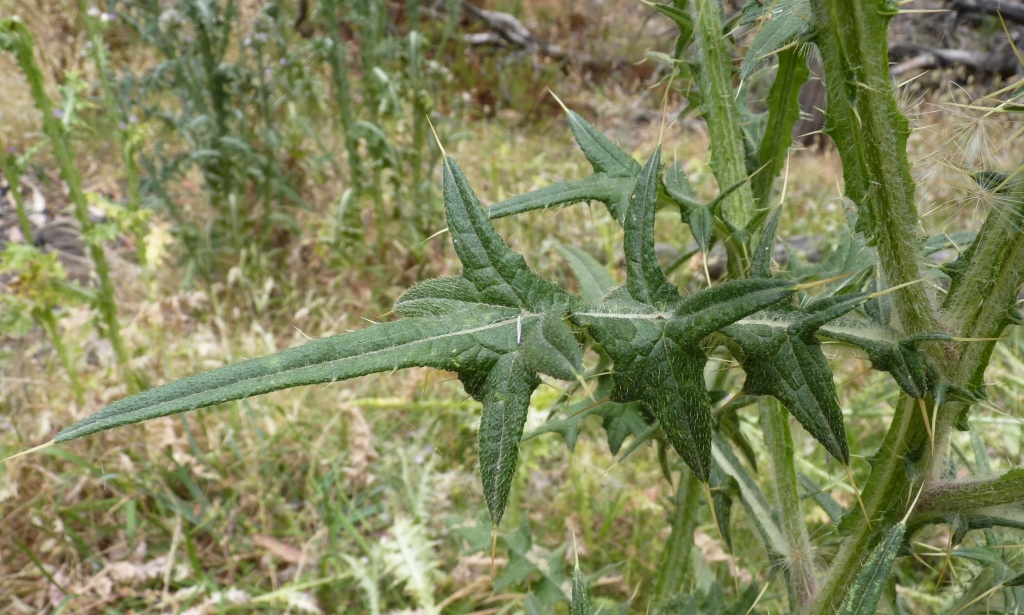Cirsium
Perennial, biennial or rarely annual spinose herbs; stems erect, often spiny-winged. Leaves basal and cauline, alternate, dentate to pinnatisect, lobes and teeth spine-tipped. Capitula campanulate to globose, terminal, in corymbs or clusters, or solitary, pedunculate or sessile; involucral bracts in several series, unequal, imbricate, herbaceous with an apical appendage consisting of a single terminal spine sometimes flanked by a few smaller spinules; receptacle flat to convex, with bristle-like scales. Florets tubular, bisexual, or unisexual (then plants dioecious), red, purple, pink, yellow or white; corolla deeply 5-lobed, sometimes 1 lobe larger; anthers sagittate or tailed at base, with subulate appendages at apex; style bilobed, with linear branches diverging only at apex, appendages absent. Cypselas obloid to obovoid, compressed, asymmetric, attachment scar basal or on one side, glabrous; pappus of several series of plumose bristles connate in a ring at base, deciduous as a unit.
About 275 species, from Europe, Asia, northern and eastern Africa; cosmopolitan weeds, 4 species naturalised in Australia.
Jeanes, J.A. (1999). Asteraceae. In: Walsh, N.G.; Entwisle, T.J., Flora of Victoria Vol. 4, Cornaceae to Asteraceae, pp. 652–666. Inkata Press, Melbourne.
 Spinning
Spinning



